While Polar’s Pacer, Vantage, and Grit lines are all more or less firmly focused on running and outdoor activities, Polar’s Ignite line is more lifestyle oriented. The latter was released in June 2019, along with the first Ignite of the same name. The Ignite 2 was released in March 2021, followed by the Ignite 3 in November 2022.
In keeping with the Ignite line, the Ignite 3 intends to be a “stylish fitness and health watch.” Furthermore, the watch is being touted as the ideal exercise companion. What is this linked watch truly worth? Amoled touch screen, dual frequency GNSS, and a maximum autonomy of 5 days… For the past month, we have been wearing the Polar Ignite 3 day and night and here is our review…
TECHNICAL SHEET
| Model | Polar Ignite 3 |
|---|---|
| Technology | AMOLED |
| Screen protection | Gorilla Glass 3 |
| Screen Definition | 416 x 416 pixels |
| screen size | Circular |
| Internal memory | 32 Mo |
| Memory (RAM) | 0.005 GB |
| Dimension | 43 mm |
| Weight | 35 grammes |
| Battery | 215 mAh |
| heart rate sensor | Yes |
| Sleep analysis | Yes |
| Accelerometer | Yes |
| Ambient light sensor | Yes |
| Price | 329 $ |
DESIGN
The Polar Ignite 3 continues the Ignite range’s understated style. We’re a far way from the bulky thicknesses and sizes of certain sports watches, which is a good thing. Above all, the Ignite 3 is a watch for all lifestyles. It should be noted that the brand’s most recent Pacer and Pacer Pro were also not behemoths. The Polar Igninite 3 is the watch on the right in the following two photographs.

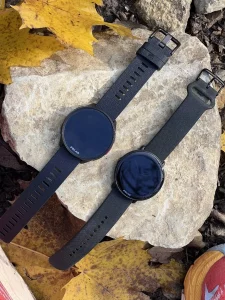
The Ignite 3 is the same size as the Ignite and Ignite 2, but it is one millimeter thicker – 43 43 9.5 mm. This thickness is more akin to traditional linked watches than to sports watches. In comparison, the Garmin Venu 2S and Google Pixel Watch both surpass 12mm.
On the scale, the Polar Ignite 3 weighs 35 grams. Without the bracelet, weigh 21 grams. If you haven’t already guessed, the watch’s proportions make it both unobtrusive and pleasant to wear, with an average-sized screen on the market.

The case’s circularity is simply broken by a single physical button positioned to the left of the tocante. The latter is discrete yet difficult to compress. The existence of this basic button reminds us of the Ignite 3’s raison d’être. It is a sports watch for “daily life,” not a sports watch for runners, trailers, or other outdoor sports lovers. All of these feature 3 to 5 physical buttons.
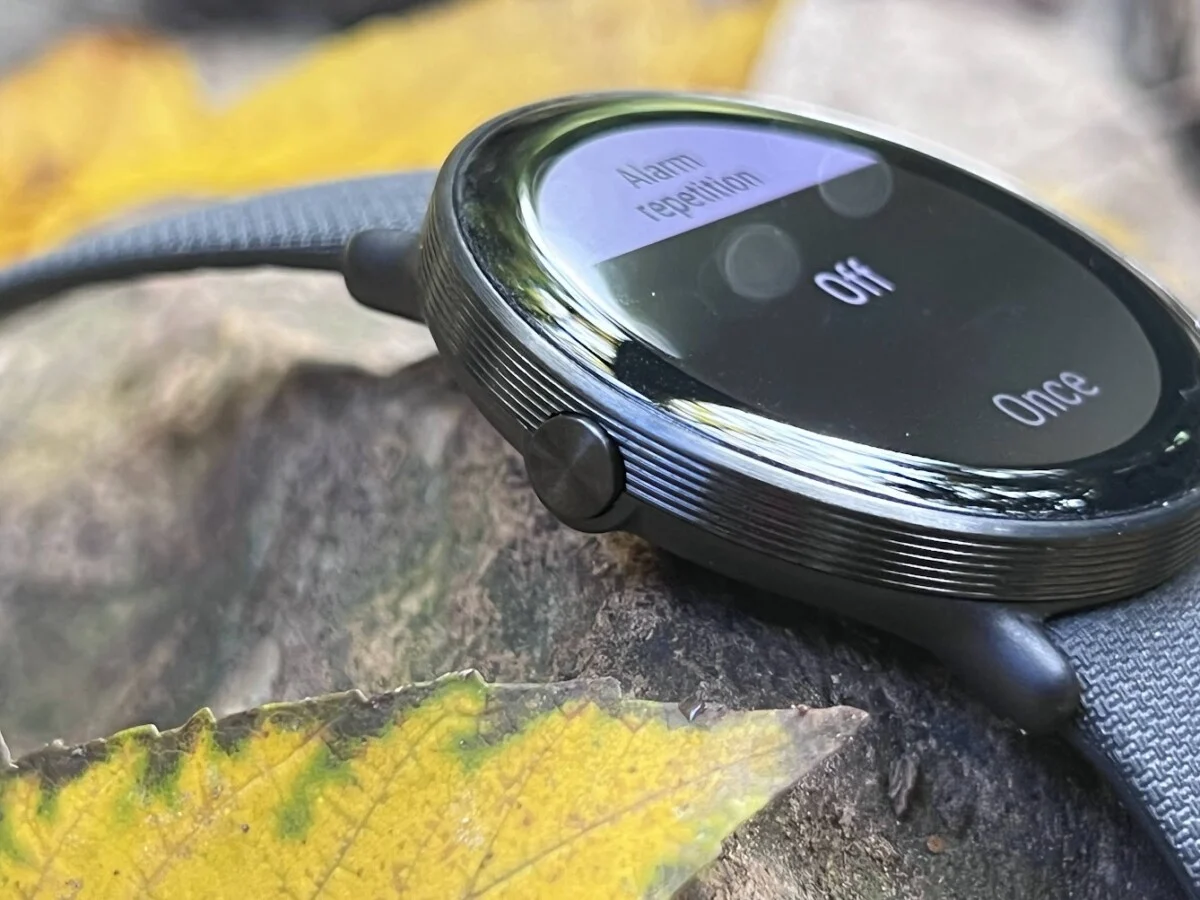
The plastic and stainless steel used in the Ignite 3 are supposed to endure temperatures ranging from -10°C to 50°C. The watch can join you in the shower or on the surface for swims, but it should be stored away for diving adventures. During our month of testing, a few dips and snags did not harm the watch, but nothing dramatic either.
The rear of the casing has the connection pins required to charge the watch as well as the Polar Precision Prime heart rate sensor. In the devoted section of this examination, we will put its dependability to the test. Surprisingly, the watch does not appear to be equipped with a sensor for measuring SpO2.

Greige Sand, Purple Dusk, Night Black, and Brown Copper are the case colors offered. Recognize beige, mauve, black, or brown. This last variety has a notched case outline, as opposed to smooth for the previous three hues. The colors of the wristbands match the hues of the case.
Speaking of the bracelet, the Ignite 3’s is meant for daily usage rather than athletic use – once again. The closing technique is identical to that found on Apple Watch silicone straps: after tightening everything to the proper size, you must slip the extra strap down the skin.
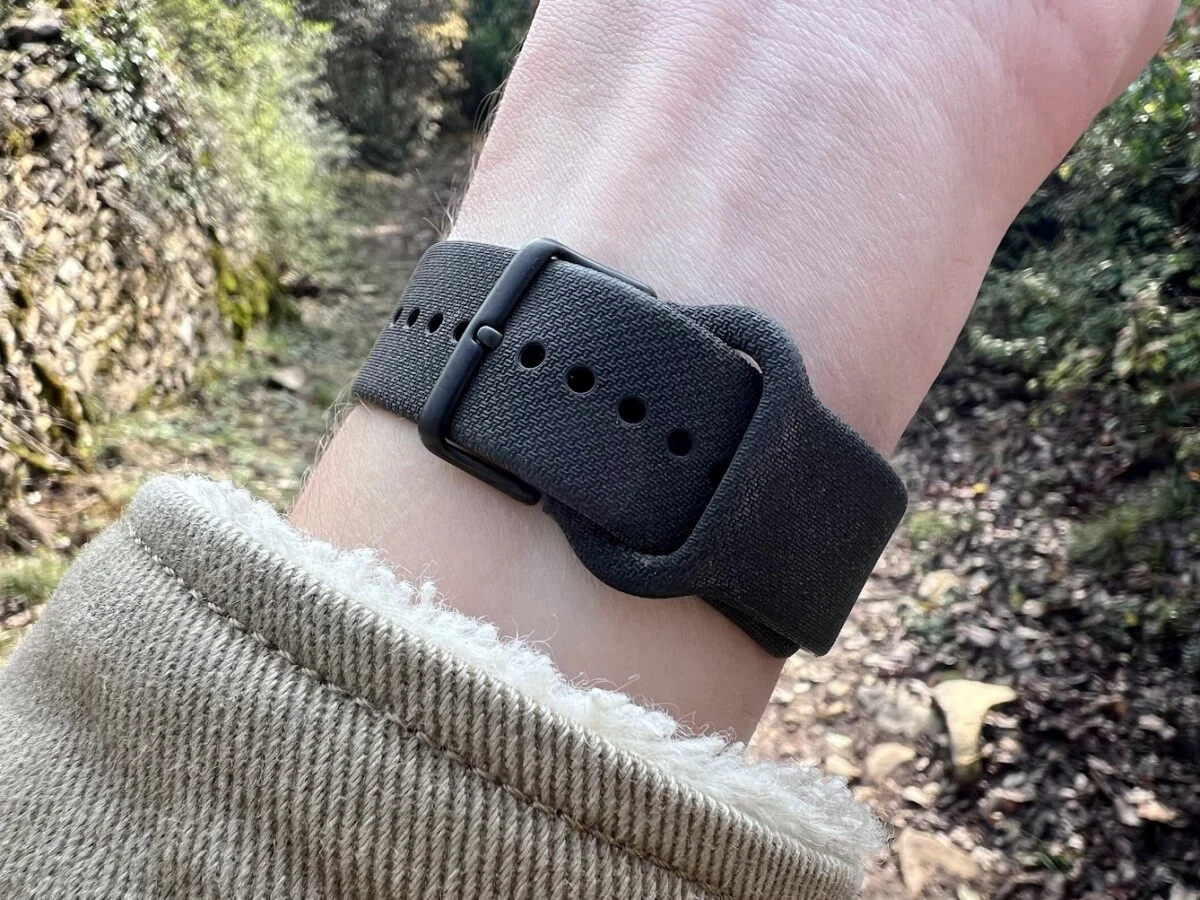
It’s not a big deal on a daily basis, but the sensation is immediately less pleasant when you squeeze the watch before a run, for example, to get the most accurate heart rate measurement possible. Keep in mind that the connection mechanism is standard: the strap may be readily changed.

SCREEN
The Polar Ignite 3 has an Amoled screen, which is fairly widespread on phones and linked watches but much less frequent on sports watches due to the diminished autonomy. It’s no surprise that the Ignite 3’s screen is very legible and enjoyable to use on a daily basis.

Polar has also implemented this technology on one of their variants for the first time. There will be no more TFT or MIP on the Ignite series. It remains to be seen whether the firm will move other of its product lines to AMOLED, like Garmin did with its epix Gen 2.
The Polar Ignite 3’s Amoled display is also very similar to that of the Google Pixel Watch. Yes, the Ignite 3’s screen has slightly curved edges. Borders that are also somewhat thick, but that we do not notice in use – another advantage of AMOLED and its high contrast ratio, without a doubt.
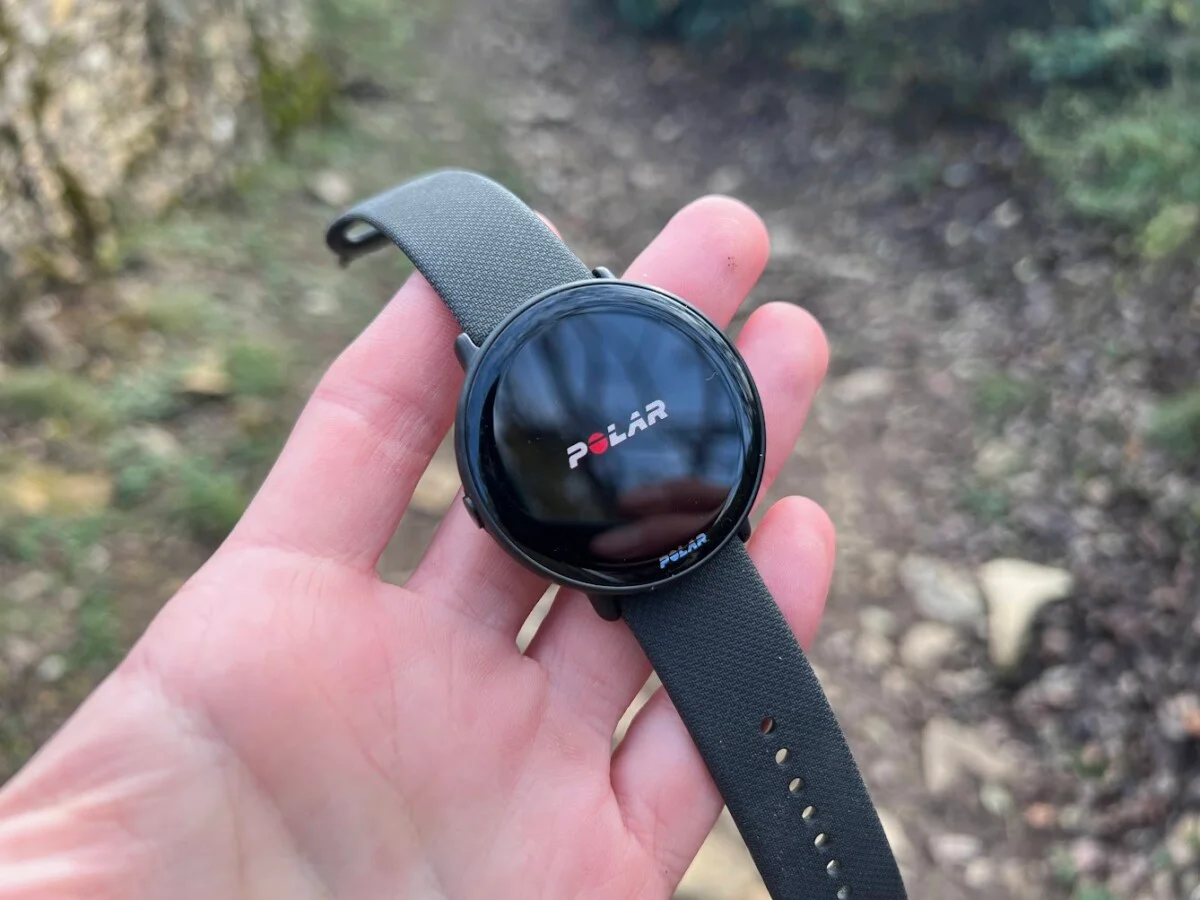
The display spans 1.28 inches and has a resolution of 416 416 pixels, compared to 240 240 pixels for practically all Polar watches. You won’t be shocked to find that the Ignite 3’s screen, like the Ignite and Ignite 2, is touch-sensitive. Navigation would have been constrained if there had just been one physical button.
We don’t have any issues with the screen’s readability, either inside or outdoors – it should be noted that the Parisian light was not particularly harsh at the time of writing these paragraphs. Unsurprisingly, the screen benefits from an Always-On setting, but be wary of autonomy.

There are four different styles of dials available, each with two to four complexities and a few text colors. The customization is less sophisticated than that of other rivals, but let’s not get too worked up over it.
USE AND APPLICATION
In Use :
The Ignite 3 did not excite us. Three points irritated us on a daily basis and during our month of testing.
Let’s start with the least bothersome: the one physical button on the watch is inconvenient to push. Suffice it to say, you’ll have to do it multiple times in the cold wearing gloves, especially if you’re out jogging.

Second, although being advertised as twice as fast as the Ignite 2, the watch’s CPU is insufficient. While the watch seems strangely smooth at times, it lags most of the time. The animations are delayed, and the watch takes a long time to execute basic operations such as waking up the screen by pressing the button, returning to the home dial, and so on. This is hardly the behavior we would anticipate from a watch costing more than 300 dollars in 2022, whether it is sporty or not.

Let’s move on to the third and most significant issue we found throughout our test, which is the watch’s incapability to recognize wrist movement. It’s straightforward; the watch’s display is off 50% of the time. To get the slab to wake up, you must then accentuate the gesture by lowering your wrist. Even while this issue is bothersome on a daily basis, it can be harmful during several sporting activities. I always anticipated having to force the wrist motion to activate the screen and read the information provided during my jogging excursions.
Let’s now concentrate on the watch’s user interface. The Polar Ignite 3’s physical button wakes up the display and opens the single Polar interface menu, which is also accessible on other models like the Pacer Pro. Access to the watch’s various features and settings is provided through this menu:
- Begin an activity
- Begin a breathing exercise
- Fueling (assistant refueling)
- Alarm, stopwatch, and timer
- Physical fitness exam (we’ll return to this)
- Settings should be monitored.
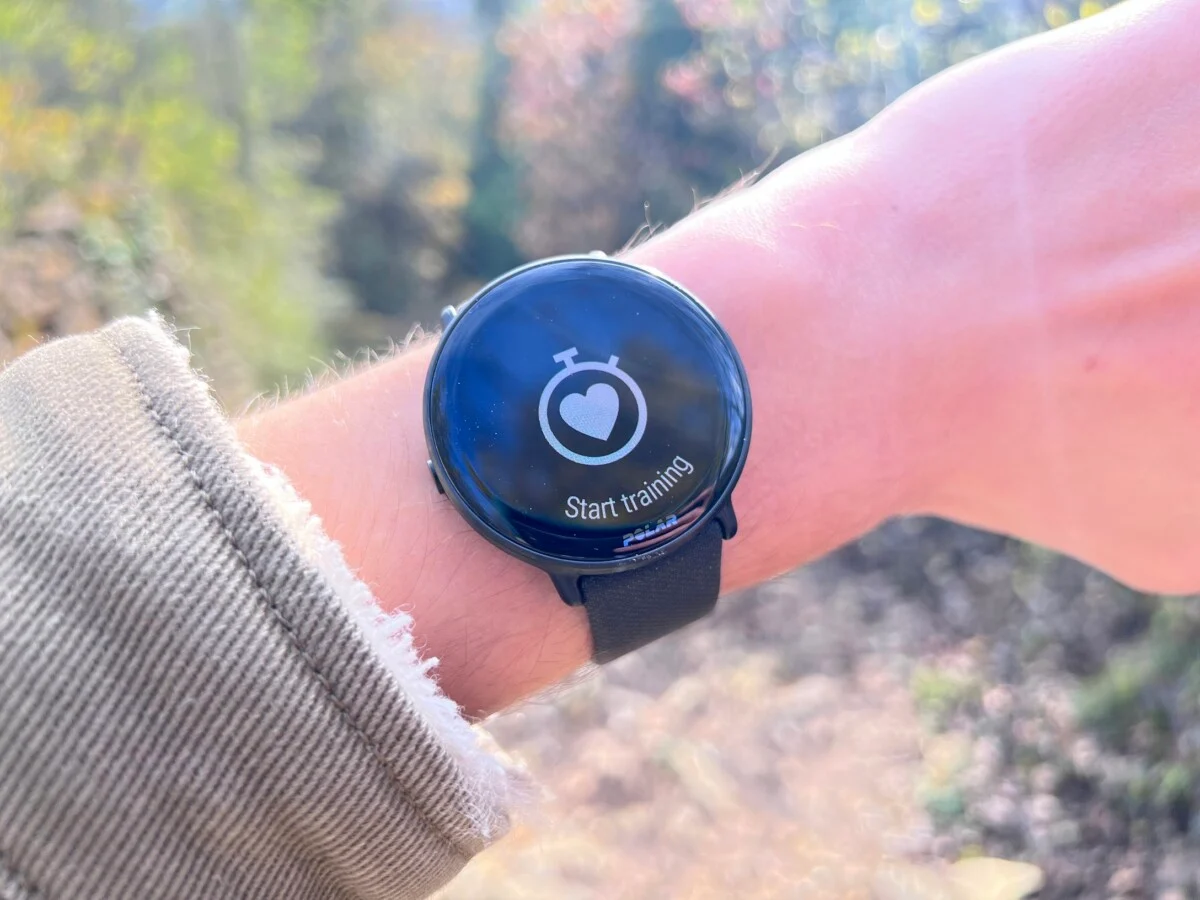
Swiping down from the dial brings up fast settings, while swiping up brings up alerts from the phone to which the watch is attached. Yes, you can read the Ignite 3’s alerts. No, it’s not going any farther. Polar’s watch, like other sports watches (save the Apple Watch Ultra), runs on an operating system that does not allow for much interaction with iOS and Android phones.
Please be aware that the Polar Ignite 3 does not support contactless payment or music storage. It goes without saying that the inbuilt 32 MB would not have lasted long. However, the music played by the phone may be controlled.
Finally, in addition to the time, a finger swipe to the left or right allows you to move through the perspectives you’ve selected. We’re talking about daily activity target percentages, training load and status, individualized training guides, and sleep tracking here. By pressing on the screen, you may get more information about the selected view.
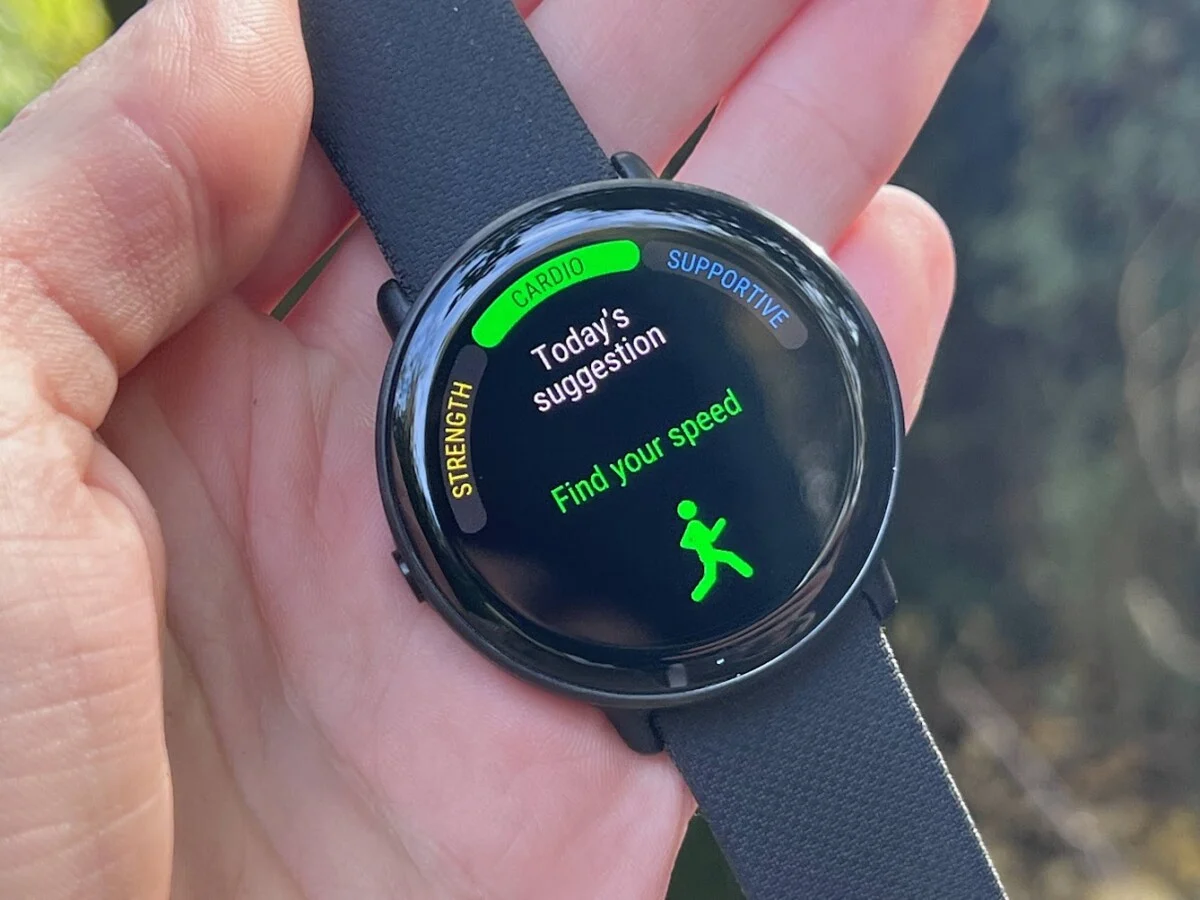
Polar’s interface, as you may have guessed, is straightforward. This is unsurprising for a sports watch, but keep in mind that the Ignite 3 is supposed to be a lifestyle watch, in between a solely sports watch and a traditional connected watch.
READ ALSO : Huawei Mate P50 Full Review
The existence of a touch screen and a single button theoretically moves the Ignite 3 closer to a connected watch, while departing briefly from the mechanics of a sports watch. In reality, navigating the UI is still a chore. As a result, we used the watch very little throughout our month of testing and preferred the Polar mobile app. Let’s speak about it now.
The Polar App :
Polar Ignite 3 syncs manually with the Polar Flow smartphone app. To send the data to the application, a lengthy push on the watch’s physical button is required. The manipulation may appear archaic in 2022, but it ensures that synchronization is well advanced. This one, on the other hand, is rather lengthy.
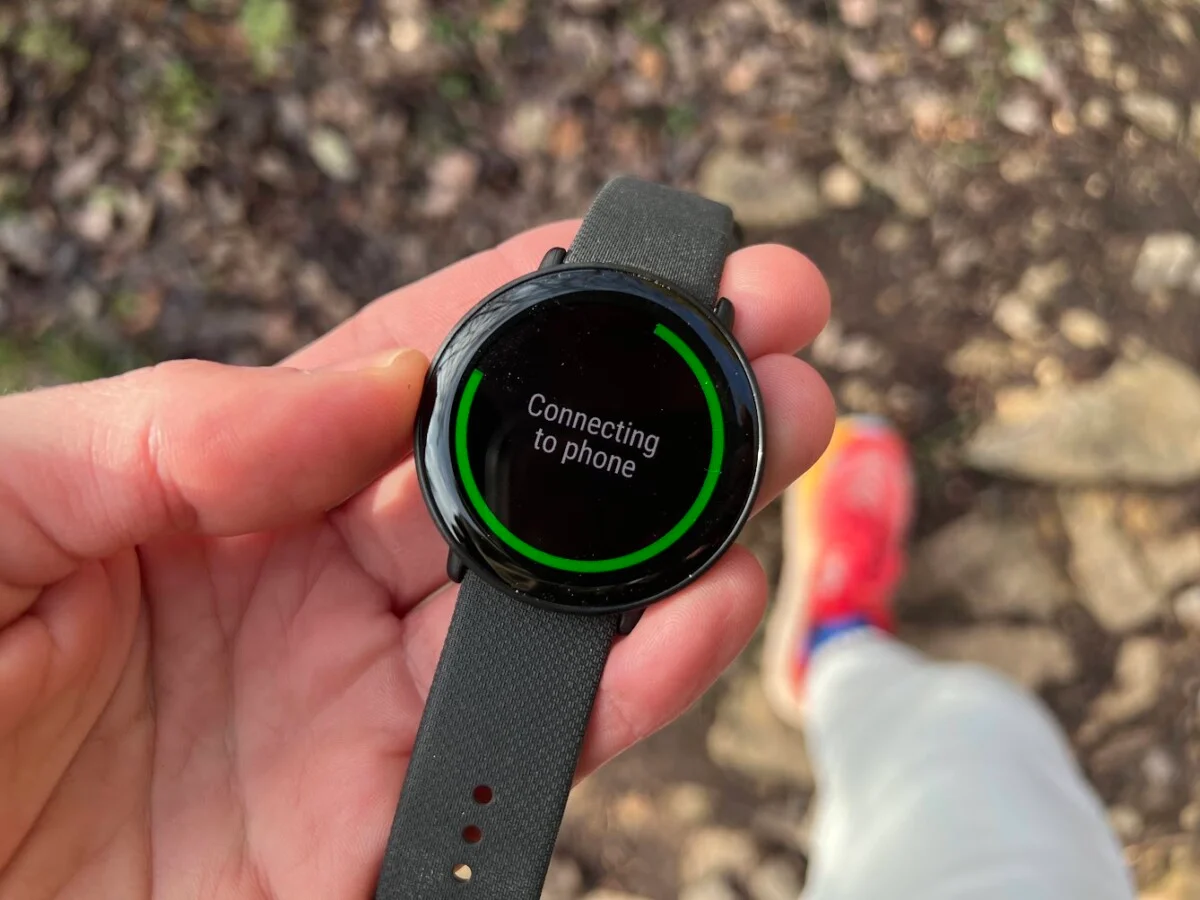
There are four screens in the Polar Flow app. The first view displays all of the information for the day, from the lowest heart rate to the training status, sleep score, and last physical activity of the day. The method is chronological, and you may erase material that appears to be worthless to you on a daily basis. By pressing, you may learn more about such and such statistics.

The other choices are for recording an activity with the phone, the training calendar (where you can construct customized sessions before synchronizing them with the watch), and watch and sport profile settings.

The information dials during sporting sessions are not as adjustable as those on Garmin watches, but the essentials are present. The heart rate zone setting isn’t the clearest, and it perplexed me on my first few runs with the watch – but you get the feel of it gradually.
Unlike the watch, the program is actually enjoyable to use as well as visually appealing. The information is well-presented and easy to understand. Technical terminology are explained in a methodical manner. The company even goes so far as to provide two types of graphs for certain data. Each day can therefore be shown as a timeline with significant occasions or as a “activity clock.”

Polar’s application navigation is well thought out, since a finger swipe to the left or right allows you to move from one day to the next in the bulk of the menus. The gesture is simple to memorize, and you save time by not searching for a history and then finding the needed data.
In brief, the Polar app provides a wealth of data and analysis, which we will return to shortly. It is not uncommon, then, to uncover specific facts after many weeks of use. It’s simple to complain that the program is crowded with so much info; a bit more clarity would be appreciated.
HEALTH FEATURES
The Polar Ignite 3 lacks several of the sensors that are typically seen in a sports watch. Although the heart rate monitor is theoretically included, it does not provide SpO2 measurement. This is an unusual decision for a watch that aspires to be a lifestyle accessory. This number may be used to diagnose suspected sleep apnea and is increasingly being monitored by wristbands and linked watches. This is not a major flaw, but it should be noted for a watch that costs more than $300.
Functions and Tips :
The Polar Ignite 3 monitors and analyzes standard activity parameters such as daily movement objective, steps, resting heart rate, and maximum heart rate.
In terms of everyday support, the watch includes Polar’s FitSpark tailored training guidance. Depending on the user’s fitness level, previous exercises, and recovery, different sessions are recommended each day. FitSpark provides 2 to 4 workout recommendations every day, for a total of roughly twenty sessions.
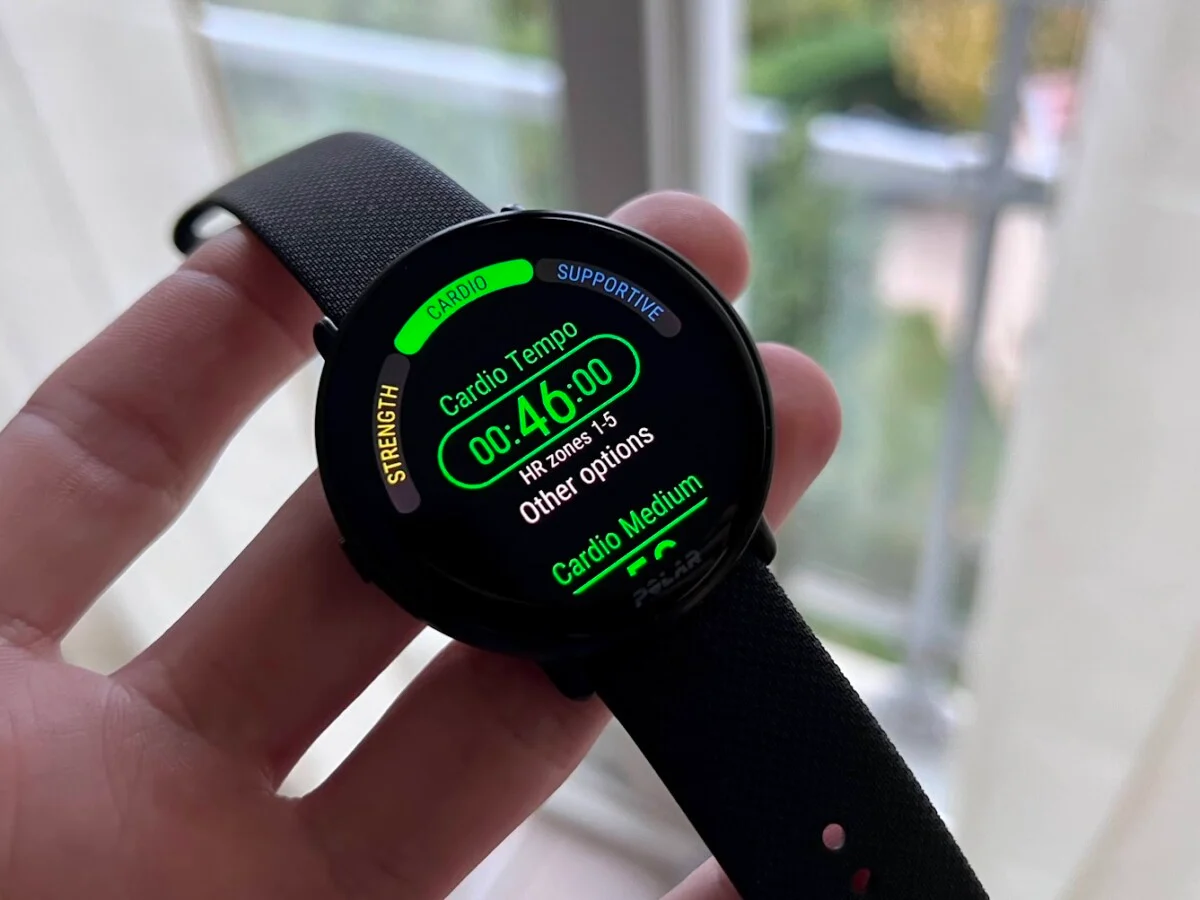
It is difficult to assess the importance of the many sessions advised, but we can only highlight functioning. The latter will undoubtedly sufficient for the Ignite 3’s aim, which does not include confirmed athletes.
The watch still provides traditional running information like load and training status. However, runners should be aware that the Ignite 3 does not provide a running power estimate. Cartography is also not included.

Unfortunately, the Always On mode is not available during an activity. As a result, we must rely on wrist movement to activate the screen. If you have read the exam thoroughly, you will see that this is not a simple assignment.
In the same line, keep in mind that the single physical button makes it impossible to operate the watch when it rains, rendering the touchscreen almost inoperable. The same thing happened with the Apple Watch Ultra, although the Polar Ignite 3 isn’t marketed as an extreme watch. As a result, it’s tough to fault him too much on this issue.
Polar has also discovered a way to score a lap during a jogging session: rapidly cover the screen with your palm. It works reasonably well.
Intriguing Estimates :
In their analysis, sports watches frequently overestimate the user’s performance, particularly when predicting their VO2 max. Polar is no exception, and on top of that, it takes a fairly unique approach.

Yes, without any exertion, the watch can measure your maximal oxygen usage. Resting heart rate, heart rate variability, age, gender, age, height, mass, and training history are all factors in this final exam. To summarize, laboratory testing have a bright future. Aside from the jokes, this Polar feature may have been entertaining if it hadn’t displayed an error notice after three minutes. During the test, the watch displays the estimated VO2 max in real time. I frequently had a yoyo at the start (between 58 and 66), then the score settled around 62.

The remaining two tests also failed to persuade us. The walk test requires you to walk as quickly as you can for 15 minutes on level terrain, however the algorithm deems an arm swing to be cheating and tells you to “don’t run.” Not very clever. It’s worth noting that our Polar Ignite 3 opted to shut down during my first walk test. The second went off without a hitch, and I received a score of 64, which I believe is vastly overpriced in my opinion. It should be noted that the watch took around 5 minutes to determine the right heart rate during the test – we will return to this later. The app includes a thorough report on the test findings.
Ambitious Sleep Tracking :
The Polar Ignite 3 is built around sleep tracking. In addition to recognizing the various stages of sleep during the night, the watch provides a slew of analysis with titles that outsell each other.
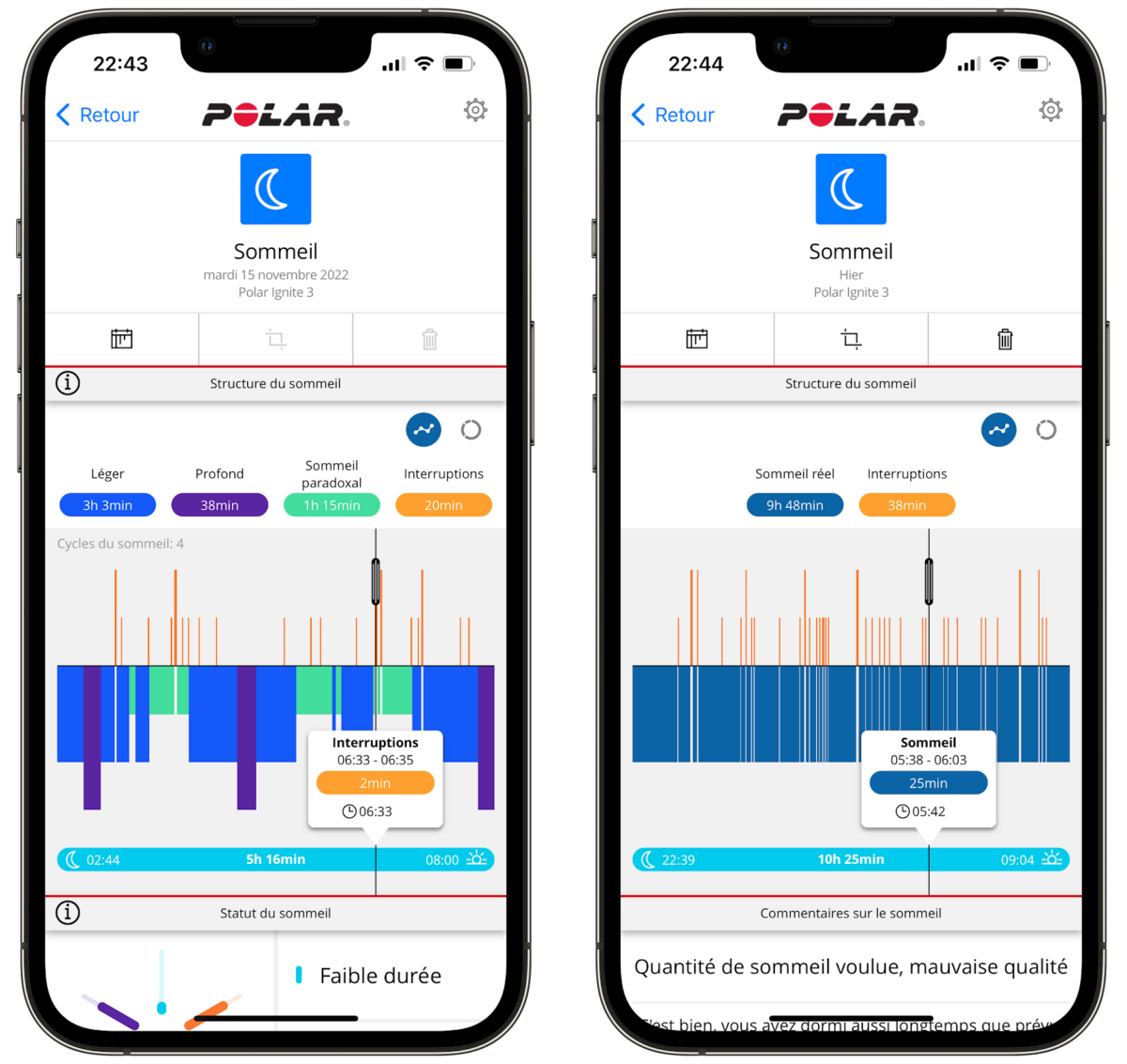
NighltyRecharge, for example, monitors our recuperation during the night following the day’s numerous demands. This metric has two components: sleep quality and ANS state (Autonomic Nervous System). The first speaks for itself, while the second “evaluates the degree of relaxation of the autonomic nervous system during the first hours of sleep compared to the average level during the preceding 28 days” – using heart rate, heart rate, and respiratory rate variability measurements.
To be honest, the Polar Ignite 3 only accurately measured our sleep time half of the time, with major disparities in the other situations. Suffice it to say, we’re skeptical of the more advanced sleep tracking metrics and functions it provides. Shame.
GPS Accuracy :
When examining the technical specs, we were drawn to the existence of a dual-frequency GNSS-compatible chip. The firm claims that this capability, which is relatively new on sports watches and normally reserved for high-end models, is included to compensate for the Ignite 3’s tiny antennae.

In truth, the watch does not shine in terms of GPS tracking dependability, but it still performs admirably. After all, the Ignite 3 is positioned as a wellness-focused watch rather than an ultimate sports watch. We’re still a long way from Garmin’s multiband GNSS accuracy.
The first screen shot below clearly shows that the display displays three different traces for three different segments on the same path. The second screen capture retranslates the tracing errors in the complicated environments that are the Parisian streets. In general, the traced provided by the Polar Ignite 3 travels through buildings or along a trottoir.


The Ignite 3 even starts the race in a parallel street on this fifteen-kilometer route, altering the overall distance and all the metrics that arise from it (speed, pace, calories, etc.). The rest of Polar’s track (in blue) explains Garmin’s advantage in the field: the orange track corresponds to the far more costly (and precise) Epix 2. For example, the latter exactly suits the majority of bends.
Keep in mind that the Polar Ignite 3’s dual-band GNSS accuracy is appealing for a watch of this sort, but it is only dual-band in name.
Accuracy of Cardio Measurements :
Unfortunately, the Polar Ignite 3’s heart rate monitor again falls short of expectations. The watch gets through the exercises with minimal heart rate change, but problems with abrupt spikes and decreases.
We evaluated the sensor’s accuracy in a variety of scenarios, including a lengthy leisurely run, a 6-hour dirt bike trip, and a hill workout. Here are the average and maximum frequencies recorded by the Polar Ignite 3 and our reference Garmin HRM-Pro heart rate belt.
Comparison of average heart rates:
| Average heart rate | Polar Ignite 3 | HRM-Pro belt (reference) |
|---|---|---|
| Fundamental endurance | 154 | 153 |
| Light split | 153 | 153 |
| Split | 160 | 164 |
| coast session | 151 | 154 |
| Gravel bike outing | 125 | 129 |
Comparison of maximum heart rates:
| Maximum heart rate | Polar Ignite 3 | HRM-Pro belt (reference) |
|---|---|---|
| Fundamental endurance | 177 | 177 |
| Light split | 177 | 172 |
| Split | 183 | 189 |
| coast session | 197 | 196 |
| Gravel bike outing | 166 | 165 |
The curve below, which corresponds to a hill workout, has several noticeable deviations: the first three climbs were not caught by the watch at all.
AUTONOMY
Polar indicates that their Ignite 3 has a maximum autonomy of 5 days. The watch would also be able to attain 30 hours of autonomy in continuous training, that is, with heart rate monitoring and GPS enabled.
In reality, without any training and without the Always On Display option, the watch lasted slightly more than three days. This score is respectable considering the screen technology, but it is still poor for a sports watch that does not allow for real-world interactions other than physical activity – alerts, calls, payments…
Here is a list of our many autonomy tests. The watch has a battery life of about 2 days in Always On Display mode and 2.5 hours of GNSS.
| Test 1 | Test 2 | Test 3 | Test 4 | Test 5 | |
|---|---|---|---|---|---|
| Wrist gesture to wake up the screen | Yes | Yes | Yes | Yes | Yes |
| Always On Display | Non | Non | Non | Yes | Yes |
| Utilization GNSS | 10 h 37 | 03 h 33 | None | 02 h 05 | 02 h 28 |
| Autonomy | 3 days and 2 hours | 2 days and 7 p.m. | 3 days and 10 hours | 2 days and 1 p.m. | 2 days and 10 hours |
You’re undoubtedly asking why the watch lasted 3 days and 2 hours with a total of 10:37 hours of training, whereas the watch only lasted 2 days and 19 hours with three times less training time. Simply because the first test’s 10 h 37 of GNSS were spent riding the bike, with me not checking at my watch during the ride. Understand that if the GNSS chip was functioning properly, the screen would be turned off. In contrast, the 3h33 of GNSS in the second test were performed while running, with far greater engagement with the screen, which was therefore much more frequently utilized – reducing autonomy, you know. You will have realized.
It should be noted that the Ignite 3 is inoperable at 5% battery. It can only give you the time at that point, and if you don’t charge it before going to bed, it won’t record your night.
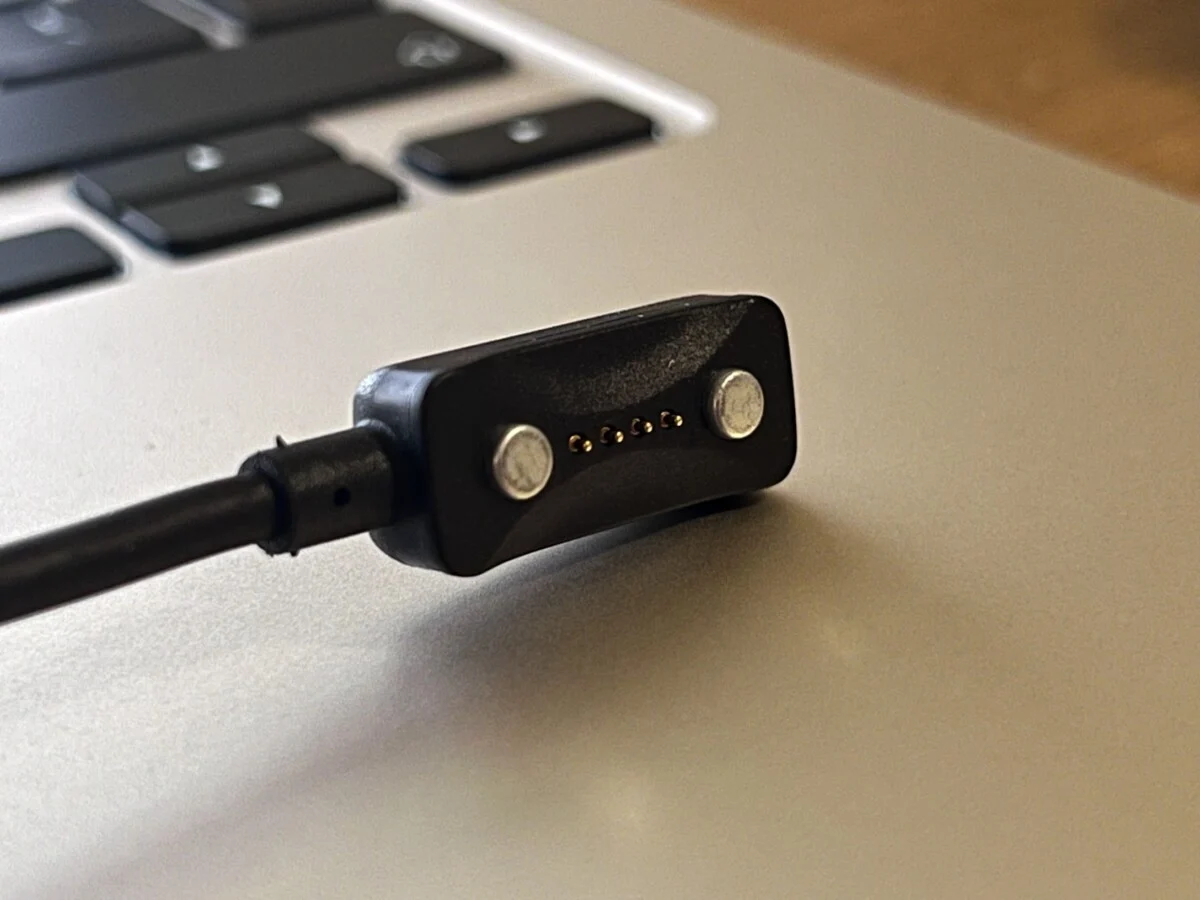
Using a proprietary connection, charging the watch takes between 1h20 and 1h30.
CALL AND COMMUNICATION
Making phone calls is not supported by Polar Ignite 3. Forget about contactless payment and audio storage. The watch does not have the ability to ring your phone.
PRICE AND RELEASE DATE
The Polar Ignite 3 is priced at 329.90 dollars, which is 100 dollars higher than the Ignite 2 when it was first released. That’s a significant price increase. Polar made an odd choice, as it costs 30 dollars more than its own Pacer Pro, which is more fitted for sports but lacks an AMOLED screen.
The Ignite 3 comes in four case and strap colors: beige, purple, black, and brown.


